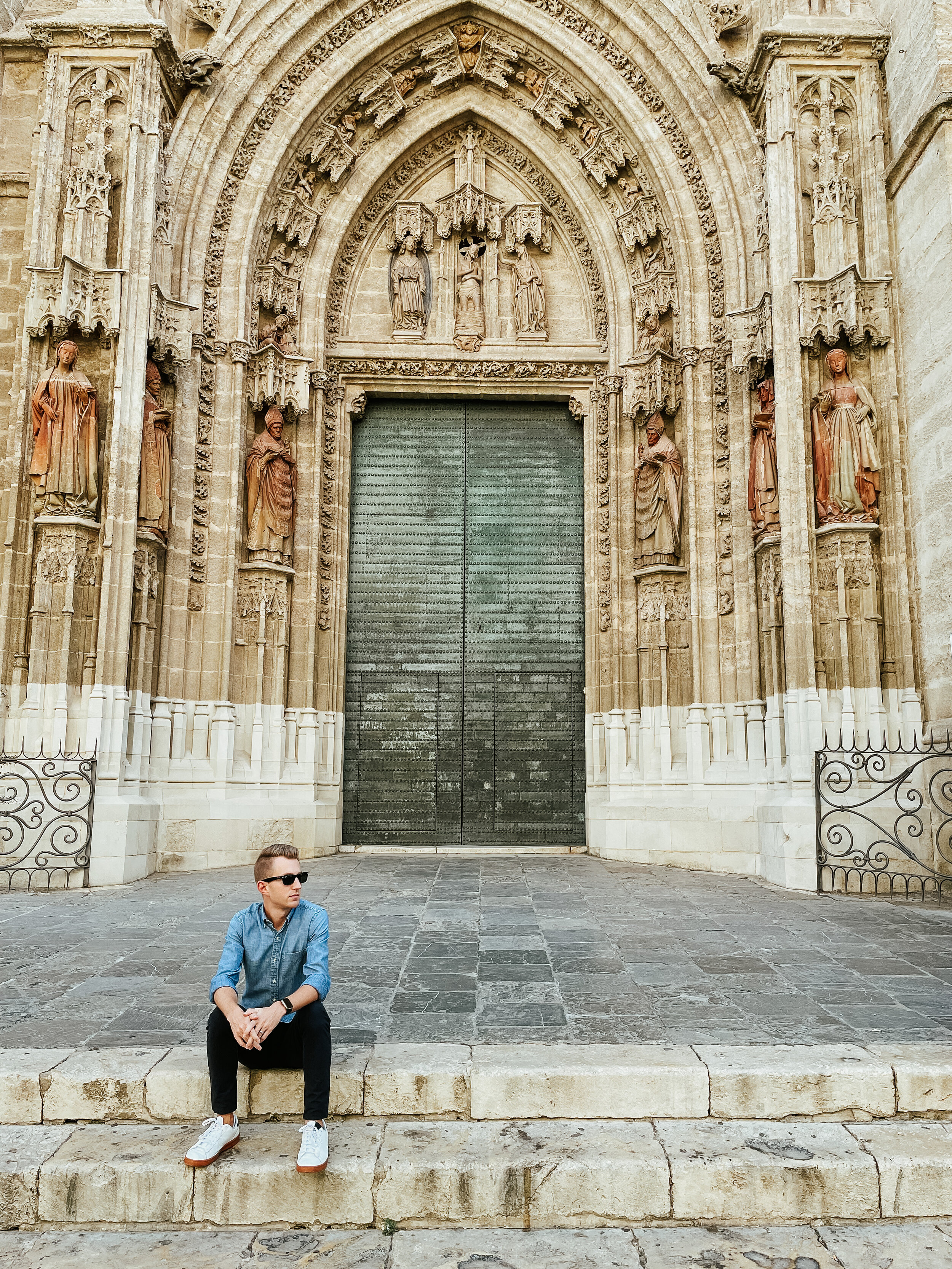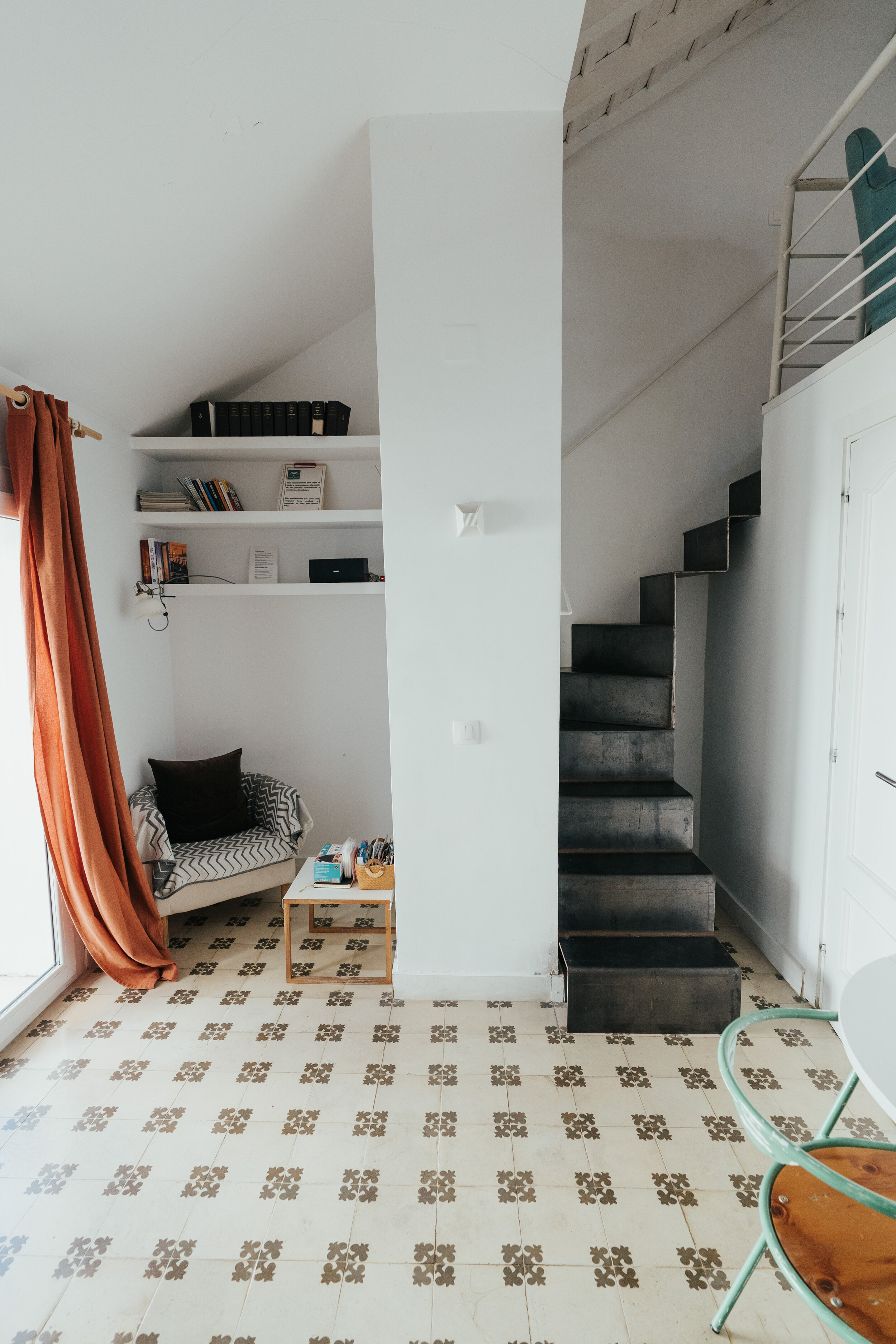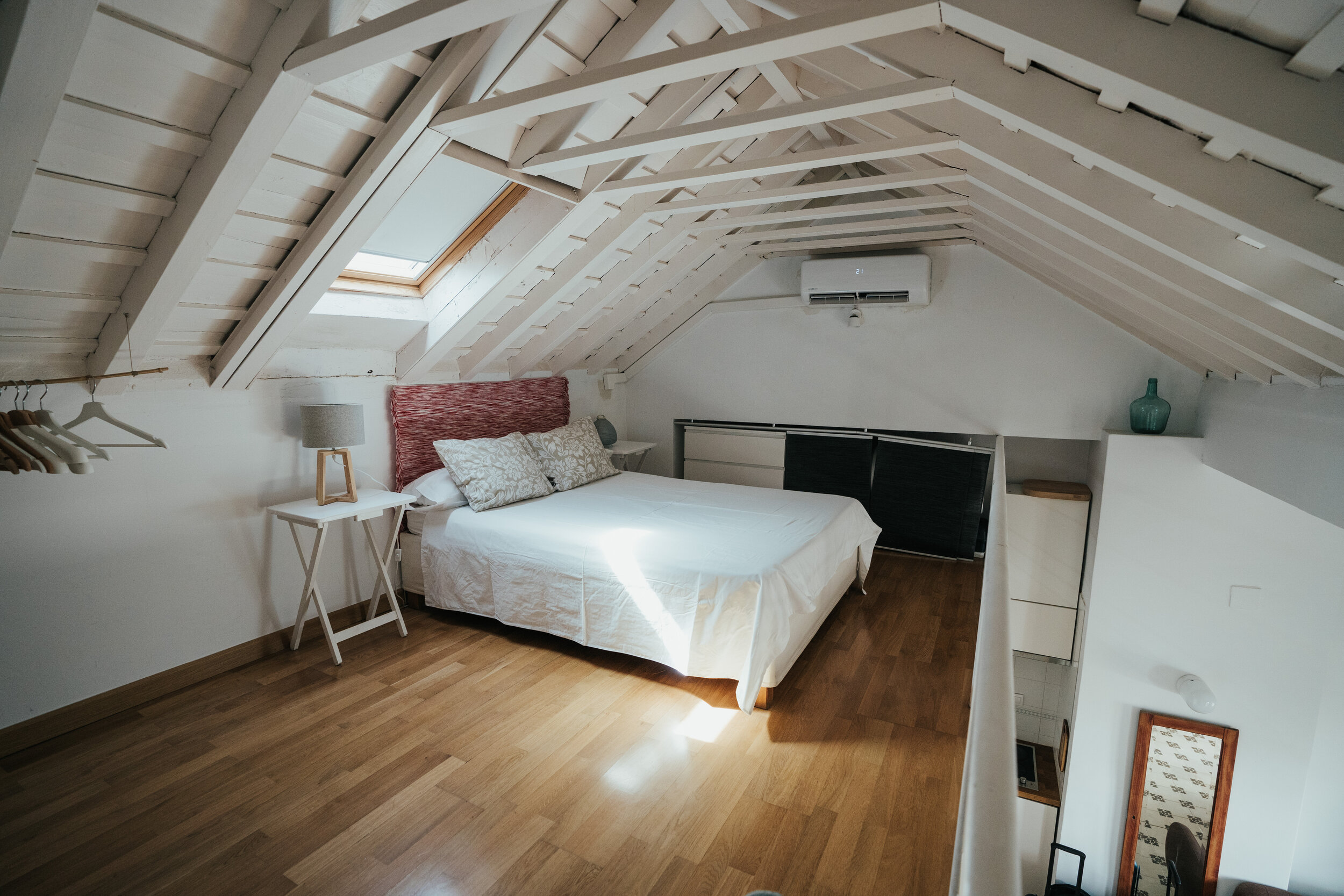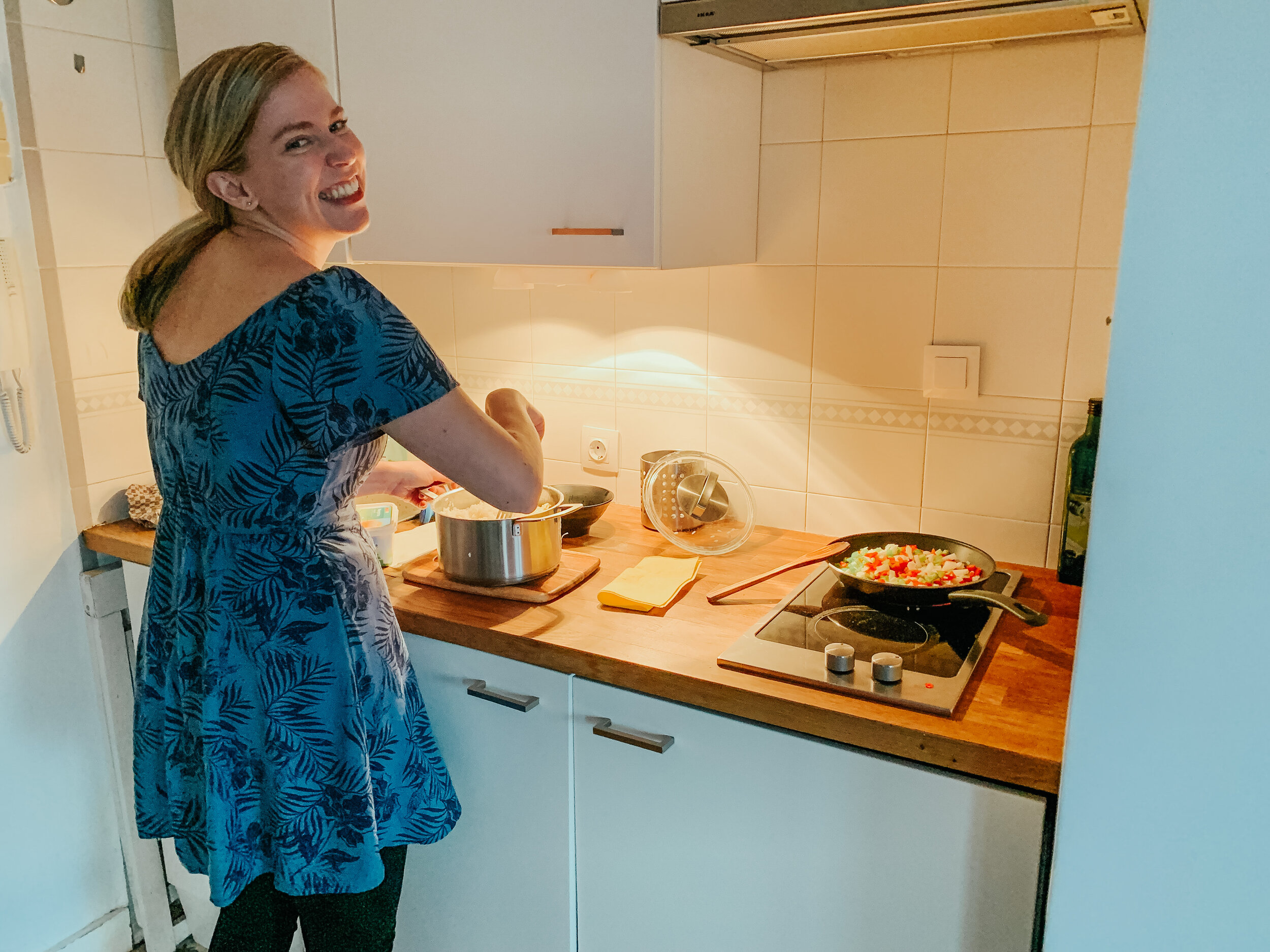Daily Life in Sevilla

Daily life in Sevilla isn’t all that different from everywhere else.
Even though people live their lives in slightly different ways, they are in more ways alike. Kids are the best example: they’re the same no matter where you go. The other day, I saw a young Spanish boy throw a rock at a palm tree at point-blank range with no hesitation. Luckily, this time fate was on his side.
For us, the transition to slow travel is not without its own challenges. At first, the learning curve was incredibly steep. I didn’t expect much culture-shock coming to Western Europe, but I was surprised at just how out-of-place I felt. The language barrier was striking for me at first. Tori could at least interact with people, but the exchanges I was used to making suddenly felt much further from reach. Even though I’m used to handling logistics, I had to rely on her to ask for directions or order—an extra step in communication. But, it’s been interesting to see how quickly we build routine—how quickly those barriers fade. At some point during the second week, it occurred to me that I had quit noticing Spanish; I was used to not hearing English. I was growing accustomed to leaning over to Tori before we were first in line and asking for the rough translation of a couple words. Without the inhibitions of being the one who was learning Spanish and whom we were depending on, I’d follow her lead and take a stab at stringing a few words together. As we’re rounding the end of our third week, I’m fairly comfortable ordering coffee by myself and can figure out, through some smiling and gesturing, what kinds of questions the barista is asking me and what from my script to answer with. They’ve quit reverting to English, so I’ll call that a win.
The heat was something we (I) largely underestimated. I knew it would be a challenge, and I knew it would be similar to my time in California, but I still didn’t account enough for how strong the Andalusian sun burns. It’s shaped the culture and way of life over the centuries. It’s from this region of the world that “siesta” originates. And, the siesta culture is real! Businesses close around 1 or 2 pm and reopen at 5 or not at all (and I’m not talking just “mom and pop” stores. It’s restaurants, coffee shops, markets, cell phone stores, etc). But, I don’t think you can really understand siesta culture until you experience the Andalusian nights. The city starts to perk up around 10 just after sunset. Restaurants and bars spill into the streets and families and couples wander in the cooling night air. Tori and I quickly took to going for walks after dinner—usually to the local gelato shop before finding our usual spot on the steps of the Archivo General de Indias overlooking the cathedral. It’s in the evening that all the worries from the day fade with the waning sun, and people make time for what’s important: just being together. The nights, even weeknights, last until the early hours of the morning, so at some point it seems everyone collectively decided that “nap time” should be part of the everyday.
One of the first things that struck both of us is how incredibly well-dressed everyone is. The women wear loud and colorful dresses and skirts—sometimes with designer shoes, sometimes with white tennis shoes. The guys seldom wear t-shirts. I remember adding more button-down shirts to my suitcase days before leaving and wondering if it would be a mistake. I’m so glad I did. Most of the locals sport a collar—even in the heat—with chinos or jeans and a pair of leather tennis shoes. Every now and then, you might see someone with shorts, but they’re most likely a tourist.
We joke that the our first month on road has been like the humble first days of marriage that we never had (we moved straight into a luxury apartment). Our Airbnb is in the heart of the old city—which means centuries-old UNESCO heritage sites are steps from our door. It also means the building is who knows how many hundreds of years old predating thick walls and building codes. We’ve learned a little Spanish from our neighbors but mostly at 3 am. The wiring in the walls is 220v but on 10 amp breakers meaning if you so much as look at the toaster the wrong way, the whole places goes dark.
Cooking has been a bit of a challenge. Our kitchenette is quite minimal with two convection burners, a microwave, and a toaster—none of which can be run at the same time. It’s also been surprisingly challenging to source some of the ingredients I’m used to. There isn’t a Publix or Fred Meyer to run to with whatever you need. Things are sourced locally, in-season, and sold fresh—often straight from the grower. While there’s been a little hassle adapting to planning ahead and walking to the market (sometimes 1.2 miles away), the ingredients are much more fresh, there aren’t the preservatives that we’re used to, and the cost is significantly less. I’m noticing our grocery bill is roughly 1/3 of what it would be in the States. Because of the local nature of it, our diet has been improved, our food waste is drastically reduced, and our overall footprint is a fraction of what it is back home.
The city has had its up’s and down’s but we’ve both agreed that we’re glad that this has been our first stop—even with the siesta-augmented jet lag, the noisy neighbors, the chaotic streets, the challenging kitchen situation, the extreme heat. Because the thing about getting out of your comfort zone is…it’s uncomfortable. The knee-jerk reaction is to turn back toward what is comfortable—whether that’s a car, a couch, or a paycheck. But, being outside of our comfort zones daily has forced us to dig in and rely on each other to problem solve to meet whatever challenges arise that day and to be flexible. And, my hope is that as we continue to stretch the bounds of our comfort zones, we’ll have the eyes and the patience to not only recognize new patterns but learn to move within them. Because there will be an ebb and flow to each place we immerse ourselves in, and there will be something to learn from each—the same reflection cast in different light.
Though, I will admit that I am looking forward to a change of pace as we move to our next country this coming weekend. I still have the “adventure bug,” and being in the center of a city of 1.5 million people for a month has only heightened that. I’m still longing to roam and get lost in the expanses. The edges of the Earth are at the center of mind, though, I haven’t quite cracked the code on how to visit some of those on a budget. But, that’s part of the process, right?
I wanted to put a few lines together to give some insight, past the instagramable moments, into our daily lives here in Spain, and show that while it’s not all butterflies and rainbows, it’s still good.
Things I’m learning (relearning) this month
Change is hard, no matter how exciting it may be.
Even the most foreign of things become familiar faster than you might think.
Kids are dangerous—no matter where you are.






